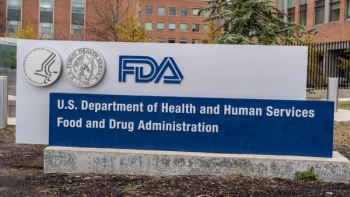
Patients on the Picket Line
Good science can’t be rushed, even when the lives of patients hang in the balance. But regulatory science, and its relationship to a drug’s commercial success or failure
Good science can’t be rushed, even when the lives of patients hang in the balance. But regulatory science, and its relationship to a drug’s commercial success or failure, can inadvertently block access to individual patients in their hour of need.
On the way into the main entrance, attendees of BIO 2012 last summer in Boston walked past Lorraine Heidke-McCartin and a gang of pink and black-bedecked picketers assembled to protest what they believe to be FDA’s bureaucratic foot-dragging in the approval of Genentech/Roche’s breast cancer drug known as TDM-1.
Heidke-McCartin, who was diagnosed with breast cancer (HER2-positive) in 2006, was denied entry into an expanded access program at Boston’s Dana-Farber Cancer Institute, after Genentech pulled the plug on its expanded access program as a result of FDA’s refusal to grant the drug expedited review in 2010.
However, Heidke-McCartin was granted access to the drug at a hospital in Fairfax, Virginia – a 950-mile round-trip she made 16 times, at her own expense, according to a
Less than a month after the BIO convention, President Obama signed PDUFA V into law, which included a “
The clause also requires Secretary Sebelius to issue draft guidance, by February 2014, on the requirements and procedures involved in reviewing breakthrough products. Frank Burroughs, founder of the
Burroughs tells PharmExec that one potential problem related to the PDUFA V breakthrough clause is that it “has no teeth…it doesn’t enforce FDA action.” But FDA is nevertheless “moving forward with the concept,” and Burroughs says he’s scheduled to meet with the “breakthrough team” at FDA on February 15 to discuss plans, a timeline, and how to implement the new designation. A week later, he’s scheduled to discuss the meeting’s outcome with FDA Commissioner Margaret Hamburg.
While the breakthrough provision doesn’t address the issue of accessing drugs prior to approval, the intent of the law is “to get promising, investigational drugs to patients sooner,” says Burroughs. On the issue of compassionate use, managed access or expanded access programs, which do give patients access to drugs prior to approval, Burroughs points to the FDA Subcommittee on Science and Technology report from 2007, titled FDA Science and Mission at Risk, which called for an “expedited, provisional approval mechanism coupled with extensive safety monitoring,” beyond what’s available currently under accelerated or expedited review. A new, provisional approval mechanism “could provide CDER with a nearterm opportunity to progress the transition from reactive to proactive regulatory science, which is where the Center needs to be for the future,” the report’s authors conclude (
Burroughs says government isn’t the only bureaucracy preventing access to investigational drugs for dying patients; PhRMA has opposed the mission of the Abigail Alliance, but in late 2005, when then Senator Sam Brownback (R-KS) and four co-sponsors first introduced the Access, Compassion, Care, and Ethics for Seriously Ill Patients (ACCESS) Act, “PhRMA got involved, talked it over, and then said they wouldn’t take a side either way,” which Burroughs says he counts as progress. One reason pharma restricts early access is out of fear that an adverse event, or a patient death, could occur, jeopardizing a drug’s regulatory status. This fear is unfounded, says Burroughs. During a meeting with Richard Pazdur, Patricia Keegan, and other FDA bigwigs in August 2001, Burroughs says he asked if any drug going through the clinical process had failed to be approved based on data from an expanded use program, outside of the clinic. “They said, ‘we’re not aware of any case of this happening,’” says Burroughs.
Despite being reintroduced several times, the ACCESS bill never made it out of committee. But Burroughs says Rep. Brian Bilbray (R-CA) will reintroduce his
Newsletter
Lead with insight with the Pharmaceutical Executive newsletter, featuring strategic analysis, leadership trends, and market intelligence for biopharma decision-makers.





